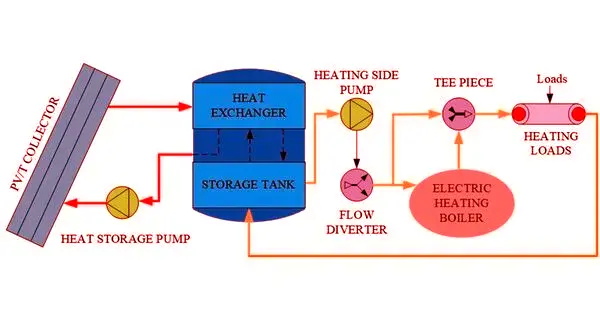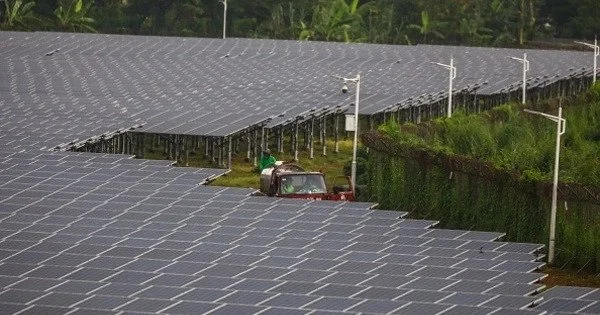Biopower technologies use processes similar to those used with fossil fuels to convert renewable biomass fuels into heat and electricity. To generate biopower, the energy stored in biomass can be released in three ways: burning, bacterial decay, and conversion to gas/liquid fuel.
The majority of biomass electricity is generated through direct combustion. To generate high-pressure steam, biomass is burned in a boiler. This steam flows over a series of turbine blades, spinning them. The turbine’s rotation powers a generator, which generates electricity. In a process known as co-firing, biomass can also be used to replace a portion of coal in an existing power plant furnace (combusting two different types of materials at the same time).
Researchers describe a computer simulation model that addresses the challenge of solar power’s inherent intermittency by incorporating biomass as another renewable energy source in order to advance a reliable, affordable heating solution while lowering carbon dioxide emissions. The proposed solar-biomass hybrid system is built on distributed multi-generation technology, which combines photovoltaic-thermal and biomass power sources.
Adding an organic matter power source to a solar energy unit could provide 100% heating for a single-story home during the coldest months of the year while also benefiting the environment. During the warmer months, the system may generate surplus electricity that can be sold back to the grid.
We show how this hybrid system is a cleaner, more energy-efficient heating solution than fossil fuel in single-family homes. The system would be useful in rural communities where farms have large amounts of biomass in the form of agricultural waste that can be combined with solar power to close the urban-rural electricity gap while also benefiting the environment.
Gaoyang Hou
Researchers from China and the United States outline a computer simulation model in the Journal of Renewable and Sustainable Energy, published by AIP Publishing, that addresses the challenge of solar power’s inherent intermittency by adding biomass as another renewable energy source to advance a reliable, affordable heating solution while reducing carbon dioxide emissions.
“We show how this hybrid system is a cleaner, more energy-efficient heating solution than fossil fuel in single-family homes,” said co-author Gaoyang Hou. “The system would be useful in rural communities where farms have large amounts of biomass in the form of agricultural waste that can be combined with solar power to close the urban-rural electricity gap while also benefiting the environment.”

The proposed solar-biomass hybrid system is based on distributed multi-generation technology that integrates photovoltaic-thermal (PV/T) and biomass power sources. Biomass is made from renewable organic matter such as corn husks, nut shells, wood pulp, and food and animal waste. A PV/T system, which consists of PV panels and thermal collectors, is a new technology that converts solar energy into both heat and electricity with a higher energy conversion efficiency.
Neighborhoods and commercial greenhouse farms have been the focus of research into emerging decentralized hybrid systems. The researchers tested their system on the heating needs of a single-story cottage in northwest China from November to March, where winter temperatures can drop below minus 20 degrees Celsius (minus 4 degrees Fahrenheit).
Of the total energy input, the PV/T collector generated 52% of the electrical energy and captured 8% of the available thermal energy. The biomass generated the remaining 40% of the electricity needed to heat the house.
“Throughout the heating season, solar power predominates on the energy supply side, with biomass energy generation kicking in when needed to make up the energy deficit,” said co-author Lei Xu.
TRNSYS (short for transient system simulation tool) is a modular thermal system software used to evaluate the performance of thermal and electrical renewable energy systems. Their hybrid system simulation included, among other things, a PV/T collector, heat pump, storage tank with an immersed coiled-tube heat exchanger, flow diverters, and a backup electric boiler.
The researchers are creating a model of a solar-biomass system to meet the heating and cooling needs of a small commercial building, and if successful, they intend to create a prototype for experimental testing.
















